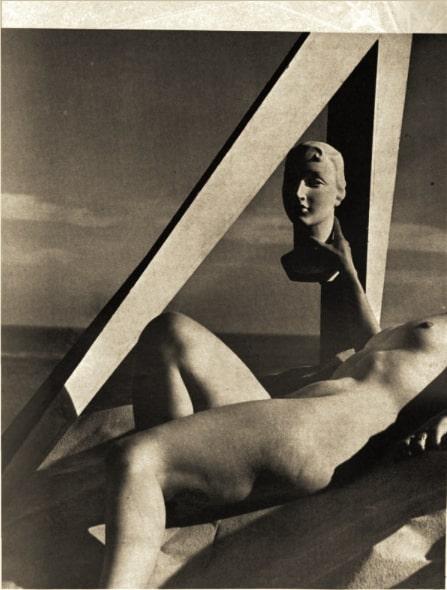Explorations with the Human Body: Zia Qadri’s Tryst with Surrealism
The dominance of Surrealism in Europe began to wane with the eruption of the Second World War. As several members of the movement scattered across the European continent, prominent artists—such as Max Ernst, Marc Chagall and Ferdnand Léger among others—transitioned to the United States of America. These artists either remained there for a long period or made it their permanent home. As for Surrealism in the United States of America, disparate attempts had been made before the start of the war to introduce the movement by dealers such as Howard Putzel and artists such as William Copley. Sustained efforts by influential collectors such as Walter and Louise Arensberg, and institutions such as the Modern Institute of Art (opened in 1948), broadened the social network for Surrealism, promising the expat Surrealists patronage in Los Angeles. As the historian Susan M. Anderson writes, “The peculiar and pervasive fantasy of Los Angeles, its illusion and promise of fame, made the city surrealist by nature.”
When the photographer Zia Qadri arrived in Los Angeles to join the Art Center School (now ArtCenter College of Design) in 1940, there was another famed artist who arrived there. This was the Surrealist Man Ray. The influence of Surrealism in Los Angeles in the 1940s was quick and far-reaching which led Ray to say, “There was more Surrealism rampant in Hollywood than all the Surrealists could invent in a lifetime.” It is unclear whether Qadri himself was ever in direct dialogue with the artists belonging to the Surrealist movement. However, there is very likely to have been an exposure to these forms, as we see Qadri experiment with a lot of the features of the movement. “The human body became a site for a range of explorations and provided a vehicle for expressions of anxiety about the self and the world,” notes the introduction to a 1994 exhibition on American Surrealist Photography at the Museum of Modern Art, New York. We see consistent expressions of this within Qadri’s work, through his portrayal of the nude female figure—be it live models or statues and mannequins. Mannequins were also an artefact that fascinated a lot of photographers, from Eugene Atget to Man Ray himself.
In the album presented here, we see some of Qadri’s experiments into seemingly Surrealist photography, taken during his student years in Los Angeles. All these images were featured in various issues of the Popular Photography magazine.
All images by Zia Qadri.
Click on the image to view the album





